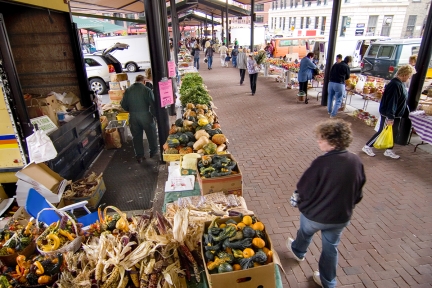
Communities that are resilient to climate change are able to effectively to prepare for and recover from its effects, and continue to thrive. Communities can build resilience by:
- Offering safe and durable shelter to withstand extreme weather
- Generating and storing renewable power
- Absorbing rainwater to reduce flooding and replenish aquifers
- Using vegetation to provide shade and improve air quality
- Building social networks to support people in need
- Providing healthy, local food
Investing in these strengths of climate-resilient communities provides multiple benefits for human health, the economy, and the environment.
Climate-resilience initiatives
Public parks and healthy trees – Leafy trees keep people, green spaces, buildings, walkways, pavement and vehicles cooler. Trees, grass, and gardens help reduce flooding and hold stormwater, and parks provide places for communities to gather and build social networks. Park buildings can provide safe shelter during bad weather.
Community gardens and farmers markets – Locally grown food can make us more climate resilient; we are vulnerable to extreme weather in other places when it disrupts transportation or destroys crops we rely on. Tending community gardens helps residents learn about growing vegetables in our changing climate. Both gardens and farmers market provide fresh food and can connect you with neighbors and local farmers.
Public and alternative transit – Supplying more public transit, ride sharing, bike and scooter rental, and bike lanes for your residents will encourage them to drive less and reduce greenhouse gas emissions.
Rain gardens and pervious pavement – Rain gardens and pavement that allows water through help control flooding by filtering stormwater and allowing it to soak into the ground, which replenishes aquifers, reduces erosion, and keeps pollutants out of nearby lakes and rivers.
Cool roofs – Reflective light-colored roofs and vegetative (green) roofs keep buildings and nearby areas cooler. Lower temperatures help solar photovoltaic (PV) panels mounted on these roofs to produce electricity more efficiently. Green roofs also hold and soak up stormwater, and can be used to grow local food.
Solar plus storage – Solar panels reduce the need for power plants and shade the areas below them. Solar can be paired with battery storage to provide electricity during utility power outages.